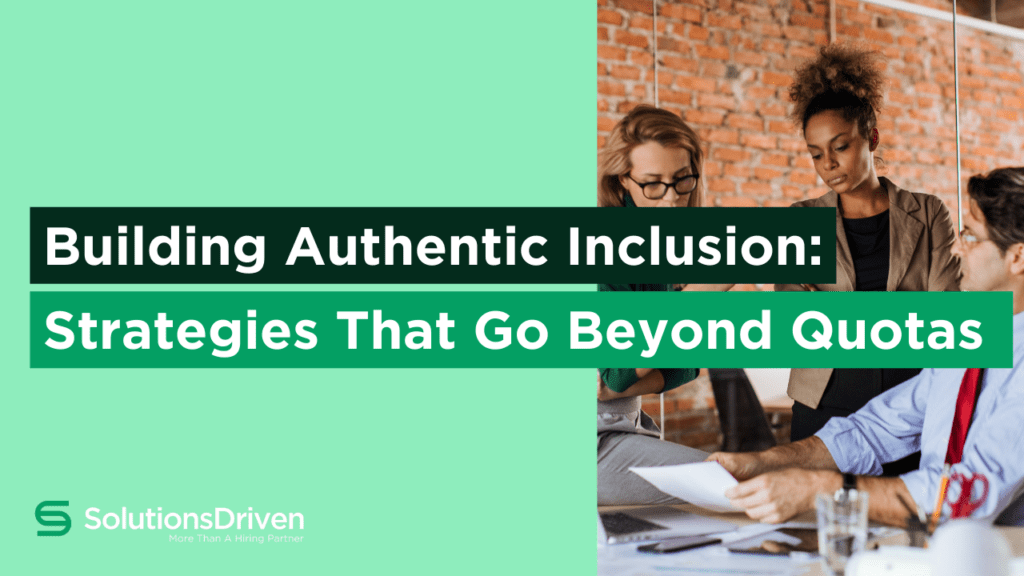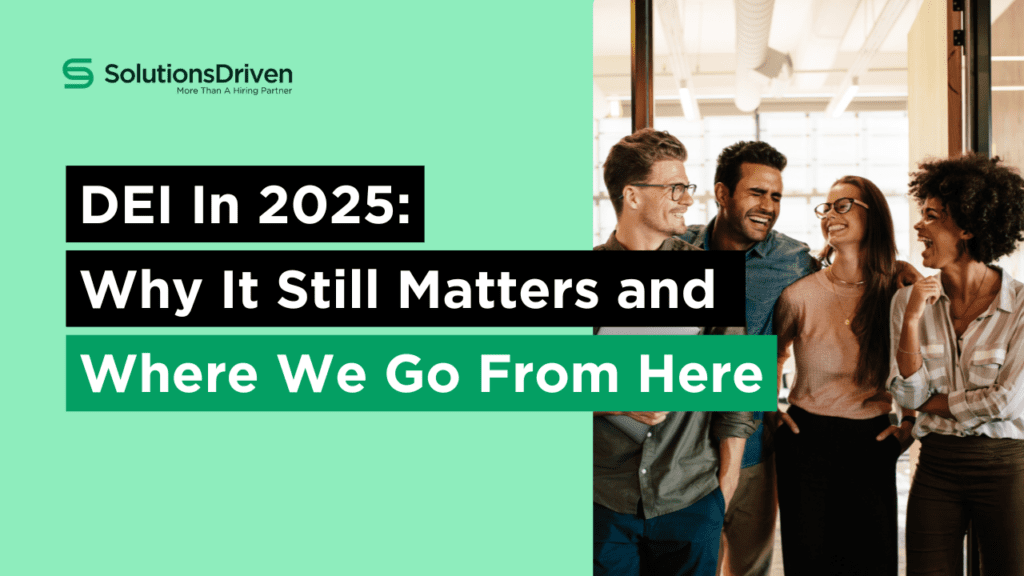To be the first to hear about our latest blogs, whitepaper releases, hiring enablement podcast episodes and get exclusive event invites, join our Exclusive Hiring Enablement Community.
The call for diversity and inclusion within organisations is not just a moral imperative but a strategic necessity. While diversity quotas have been a starting point for many organisations, true inclusion goes far beyond mere representation. Authentic inclusion is about creating environments where every individual feels valued, respected, and empowered to contribute their unique perspectives and talents. In this article, we delve into the multifaceted strategies that organisations can adopt to cultivate authentic inclusion, moving beyond quotas towards sustainable and meaningful change.
Embracing a Holistic Approach to Inclusion
At the heart of authentic inclusion lies a culture of belonging, this begins with a leadership commitment to fostering an inclusive environment where diversity is celebrated, and all voices are heard. Creating such a culture requires deliberate efforts to embed inclusion into the organisation’s DNA, from recruitment and hiring practices to day-to-day interactions and decision-making processes.
Fostering open communication channels is essential for creating a sense of psychological safety, where employees feel comfortable expressing their ideas, concerns, and identities without fear of judgment or reprisal. Empathy plays a crucial role in this process, as leaders and team members seek to understand and validate each other’s experiences, perspectives, and emotions.
Bias training and awareness programs are instrumental in addressing unconscious biases that may inadvertently perpetuate inequities within the workplace. By raising awareness and providing tools to recognise and challenge biases, organisations can create a more level playing field where merit and potential are the primary determinants of success.
Equitable opportunities for professional development and advancement are essential for ensuring that all employees have access to the resources and support they need to thrive. This includes mentorship programs, leadership development initiatives, and inclusive promotion processes that prioritise merit and potential over traditional markers of success.
Prioritising Intersectionality
Intersectionality – the interconnected nature of social categorizations such as race, gender, sexuality, and class – underscores the complexity of human identities and experiences. Recognising and addressing the unique challenges faced by individuals with intersecting identities is essential for creating truly inclusive environments.
This requires moving beyond a one-size-fits-all approach to diversity and inclusion and adopting strategies that acknowledge and accommodate the diverse needs and experiences of all employees. For example, organisations may implement targeted support programs for underrepresented groups or establish affinity groups where employees with shared identities can connect, share experiences, and advocate for change.
Incorporating intersectionality into diversity initiatives involves examining policies and practices through an intersectional lens to identify and mitigate potential biases or barriers that may disproportionately affect certain groups. By embracing intersectionality, organisations can create more equitable and inclusive workplaces where all employees feel valued, respected, and able to thrive.
Building Partnerships and Collaborations
Authentic inclusion extends beyond the boundaries of the organisation and encompasses the broader community and ecosystem in which it operates. Collaborating with external organisations, community groups, and stakeholders can amplify the impact of inclusion efforts and foster greater societal change.
Organisations may partner with local community organisations to support initiatives that promote diversity and inclusion, such as mentorship programs for disadvantaged youth or diversity scholarships for underrepresented students. By leveraging their resources, expertise, and networks, organisations can make a meaningful difference in the lives of individuals and communities beyond their immediate sphere of influence.
Measuring Success Beyond Numbers
Redefining success in inclusion efforts requires moving beyond simplistic metrics such as headcount or demographic representation. While quantitative data can provide valuable insights into the diversity of the workforce, it does not capture the full extent of inclusion or the experiences of individual employees.
Instead, organisations must adopt a more holistic approach to measuring inclusion, incorporating both quantitative and qualitative indicators that reflect the complexity and nuances of organisational culture and dynamics.
Organisations should establish benchmarks for long-term progress and sustainability, setting clear goals and objectives that align with their values and aspirations. This may involve developing a comprehensive diversity and inclusion strategy with measurable targets and milestones, regularly tracking and evaluating progress against these goals, and making adjustments as needed to stay on course.
Building authentic inclusion is not a destination but a journey—a continuous process of learning, reflection, and adaptation. By embracing a holistic approach to inclusion, prioritising intersectionality, building partnerships and collaborations, and measuring success beyond numbers, organisations can create workplaces where diversity is celebrated, and everyone has the opportunity to thrive.
Are you ready to improve your hiring processes to ensure you’re building a diverse and inclusive workplace? Learn more about how to achieve your D&I goals by downloading our white paper, Beyond Quotas: Achieving True Diversity and Inclusion through Thoughtful Hiring Practices.
Alternatively, get in touch with us directly to discuss your D&I goals. Our talented consultants are experts in creating successful organisations and are here to help!





